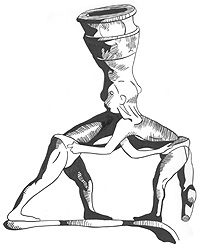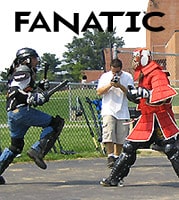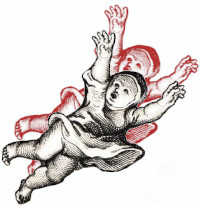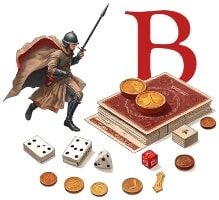The cards make the game, representing the social aspect in connection with the tokens. From low to highest rank, units are activated with a card of that same class:
Clubs = Pennies
Diamonds = Nickles
Hearts = Dimes
Spades = Quarters and may be used to activate a unit of any other suit.
Cards are used in three ways:
-1. Objectives, as previously discussed
-2. Commands to activate units, which then act according to their nature and limitations as decided by the player.
-3. Combat Result determination.
Again, the card values are:
Unit activation points.
2 thru 10
-Jack = 11
-Queen = 12
-King = 14
-Ace = 15
-Low Joker = 16
-High Joker = 17
When any command card is placed face up, to include a card that is an objective, the player turning that card gains certain options.
…
Unit Status
A unit is either:
-1. identified [has a coin token]
-2. static [unidentified, having lost or not in possession of its motivational leadership and unit identity, typical of garrisons, which feel abandoned and rear echelon units which have officers with low initiative.]
An identified unit is either;
-1. Invigorated [heads]
-2. Demoralized [tails]
-3. Broken [tails on an inverted battery or battalion. Units are broken when failing a morale check while demoralized. These may be restored with cards. A static unit may be broken as well, by inverting it and facing it away from the enemy.]
-4. Eliminated [Companies and troops are eliminated when broken. The value of the battery and battalion, with its deeper social structure and internal hierarchy is here expressed.]
…
Command and Objective Card Bonuses
Note that cards also have Rout and pursuit effects that are covered in that section.
-Deuce, a two card may be used to token identification of a static or demoralized company by placing a coin upon it corresponding with that suit. It is flipped to determine if it is heads [invigorated] or tails [demoralized].
-Seven, a 7 permits the identification of a battery or battalion that is either static or demoralized.
-Ten, a 10 permits a unit within line of sight of the General or the Objective to be restored [flipped back over] or identified.
-Jack, permits a card, unrevealed and unseen, to be pulled from the deck and set aside as a Rout Card, covered under Rout.
-Queen, permits the top card in the discard pile, to be pulled and set aside in the Rout Deck.
-King, permits a card to be drawn from the deck and placed in the player’s hand. If the player has no hand, then three cards are drawn and the player now has a great advantage, a new hand. If play has gone into the Panic Phase, due to neither player beginning a round of action with a hand, then these three cards are laid out and played in order according to suit and value.
-Ace, permits the identification or restoration of any unit that has line of sight on the General or the Objective, and the drawing of one card. This card may be placed in the hand or Rout Deck.
-The Low Joker permits a card draw into the hand and the draw of the top discard into the Rout Deck.
-The High Joker permits a draw of any 1 card into the hand selected from the discard pile and 1 unseen card from the deck into the Rout Deck. In the Panic Phase jokers are addressed.
…
Face Cards
Some artistic conventions of the face cards have special effects on the Panic and Rout Phases, and are covered therein.
…
Identification
A static or demoralized unit is understood to be officered, but not lead by a risk taking and forceful personality. There are other ways of identifying static or demoralized units. Tokens and facings are covered under flanking. Static and demoralized units may not attack and must retreat or, if unable to retreat, accept close combat with enemy units.
A static unit may be identified through certain card draws as described above, but may also be identified and brought into an active role according to the second mechanic described below under restoration.
Objectives have been covered in Pathos.
…
Restoring Units
-A demoralized or broken unit may be restored with a special card draw as described above. Static units may be identified and brought into an active status in the same way.
-Also, any unit which is demoralized [tails] or unidentified [un marked with a token] may be restored to invigorated status [heads] or identified [with a coin toss] by spending a number of points equal to the unit strength. These points must be spent by a card of the demoralized units suit. Unidentified units may be identified by points from a card of any suit.
Example: let’s say the 4/5 domino is garrisoning a village for the Fortunate Player, and that player plays the 9 of clubs. He may identify that unit, bringing it into play with a penny token as militia. If it was the 9 of hearts—bam!, he brings that garrison into an active roll under a dime. Such action represent a man within the unit rising up, or, more likely, a charismatic commander being dispatched by the general to give a real life half time speech. An example of this from antiquity was the rise of Xenophon and his Spartan friend, both Captains, to lead the 10,000 mercenaries out of Persia after their generals had been murdered at a parley. Another example, was the 1675 massacre of 5 Susquahannock chiefs by Englishmen at a parley, with the remaining 95 warriors electing new leaders and defeating the enemy in a battle and conducting a successful rout [escape], saving their women and children.
…
Facing
An identified unit faces in the direction of the head of the coin, its top.
A broken unit faces away, moving its maximum ability away from the enemy. Broken companies and troops just evaporate.
An unidentified unit has no facing, is oriented with a corner towards the enemy, and is assumed to be all flanks, with no front and rear, for combat purposes, representing its conservative nature.
Any broken battalion or battery which cannot retreat due to terrain or enemy, loses its coin and is placed face up as a static unit that may only defend. This is a last stand situation. This unit may be identified, restored by leadership with points or a card.
A unit may only attack from its front.
A unit attacking a flank, may pull a second card if it fails to inflict losses with the first.
A unit attacking the rear, has two additional pull options.
…
Cards and Combat Results
There are two types of losses inflicted:
-1. Morale, meaning the united identity and cohesion expressed by the coin token and by inverting and routing battery or battalion counter. Companies and troops have low manpower and are mostly morale weapons, highly dependent on a single leader, who, if killed, causes the unit to dissolve. The small numbers, high initiative, low structure and nimble nature of these tribesmen, horsemen and snipers, makes it easy for them to scatter.
-2. Manpower, the number of dots on the dominoes and dice. Troop and company losses are dealt with by turning the die to the reduced value. Batteries and battalions are reduced with pencil and paper. Keep a roster of each unit that has suffered losses. Once the number of losses equal the starting strength of the unit, the counter is removed.
Batteries and battalions are your capital units, your battleships and aircraft carriers. The lesser units indicated by die represent peripheral force pools that are easily recruited back into formations, provided the leadership is available. [1] Battalions and Batteries are social institutions that might last for hundreds of years. Battalions, or “battles,” are early modern “war bands,” that over time became aggregated into brigades, divisions and corps. The ancient Roman equivalent was the legion that flexed from 6,000 under the Republic, to 10,000 under the Empire [in Battle, Trajan’s legions would be made up of cohorts as battalions], and finally back down to 1500 under Diocletion. In the late Early Modern Period, marked by the American Civil War, we are talking about the Brigade.
…
Fire Power Results
Pulling low cards is clutch.
For this reason The Ace, and the jokers, are valued at 1 when pulled to determine firepower results.
-a. The firing unit pulls a card. If that card is less than the strength of the unit, then the unit being fired upon loses a number of strength points equal to the difference. Small units being fired upon at close range by large units may evaporate.
-b. A unit that has lost manpower due to fire must make a morale check. This is done by pulling a card. If the card pulled is a higher suit than the unit, then morale suffers a loss.
-heads [invigorated] is reduced to
-tails [demoralized], if a tails unit is demoralized
-the troop or company [die counter] is eliminated, or
-the battery or battalion [domino] is inverted, faced away from the enemy [using the tails side for facing], and moved its maximum distance from the attacker and also any other enemy units.
-a routing unit that is blocked by enemy or terrain become static, the coin token removed and the domino flipped to its marked side and maintained as a static unit using diagonal facing, indicating that all sides are a flank and no attack may be launched.
…
Close Combat
Close combat effects morale and manpower at the same time.
The attacking player, then the defending player, pull a card. The attacker unit is marked by his coin being slid to cover both counters. A unit that has accepted close combat also slides his coin over, indicating that these units are locked in a death match until one is eliminated or breaks.
A troop charging, for the first round of close combat, gains strength points equal to its unexpended movement.
The close combat card has two values, the morale and strength.
Effects on morale and manpower are applied to each player according to the card he pulled.
If the card pulled by a player, has a suit value higher than the unit, then that unit takes a morale hit, as per morale above. Thus, spade units never suffer morale losses, being fanatics. Clubs units, usually take a morale hit right off.
The point value of the card is then checked against the strength of the enemy unit with the ace and joker valued at 1. [This is an important last stand mechanic.]
If the card is greater in value than the strength of the enemy unit, your unit takes no losses.
If the card is lower in value than the enemy unit, then a single loss is sustained. [It takes time to kill men in close combat compared to cannon and shot.]
If the card is the same as the value of the enemy unit, then no losses are sustained
If the card is the same in value as your unit [like pulling an ace or joker when you are down to a strength of 1] then this unit’s morale is restored to full, or augmented with an additional coin of the same value, making this unit into a berserk band with extra morale.
Broken units leave close combat just as those broken from firepower. The enemy unit automatically takes that space, even if it is not a good idea.
Troops in the second round of close combat, do not possess their movement bonus. However, a troop may break off combat and retreat to half its movement rate after any round of combat that fails to break the enemy unit, that is not also a horse unit.
Static units must accept close combat fighting from the flank, which means that the attacking unit gains the advantage of re pulling a card that does not serve his purpose.
All cards pulled and used in combat are placed face up in discard. Special cards that are pulled for combat resolution: 2s, 7s. 10s, aces and face cards do not have special effects and are only used to determine morale with the suit and losses and possible extra morale with the value.
Momentum
The Chaos Phase will continue after each player’s hand is depleted by the following.
A player with no hand, draws a card and plays or keeps it.
If both players have no hand, this is done at the same time and play has progressed to the Panic Phase.
When a player has a hand and the other does not, he waits to see if the drawing player plays or keeps his card. He may then either play a card, or draw a card and place it face down, with out checking it, in his Rout Deck. The Rout Deck governs retreat and pursuit of broken armies in the Rout Phase.
When both players have a hand, even of one card, they must play.
When a round of play begins with neither player having a hand, Chaos has turned into Panic.
…
Notes
-1. See the history of John Singleton Mosby and the two histories of Nathan Bedford Forest, A Battle from The Start and Bust Hell Wide Open.











